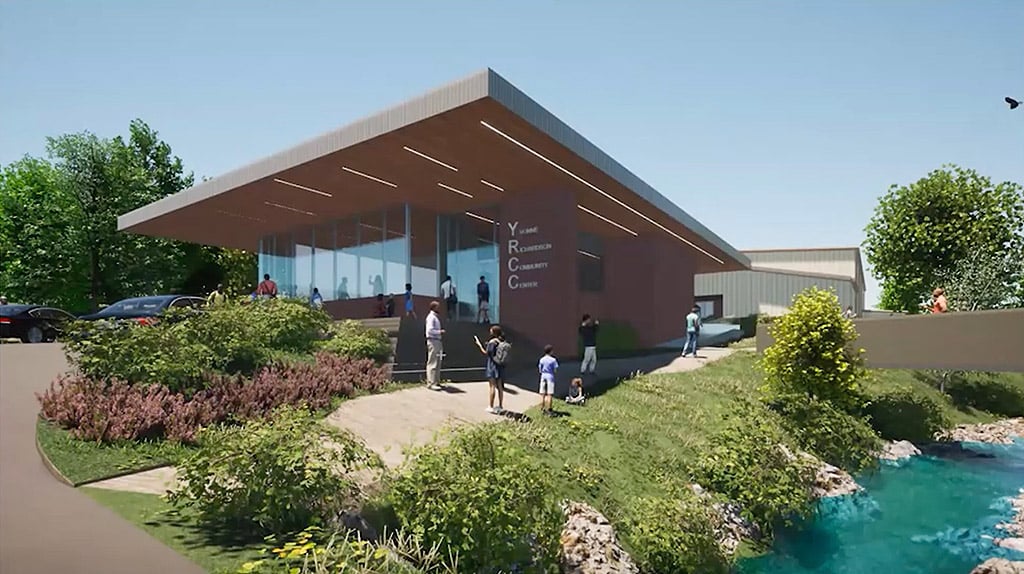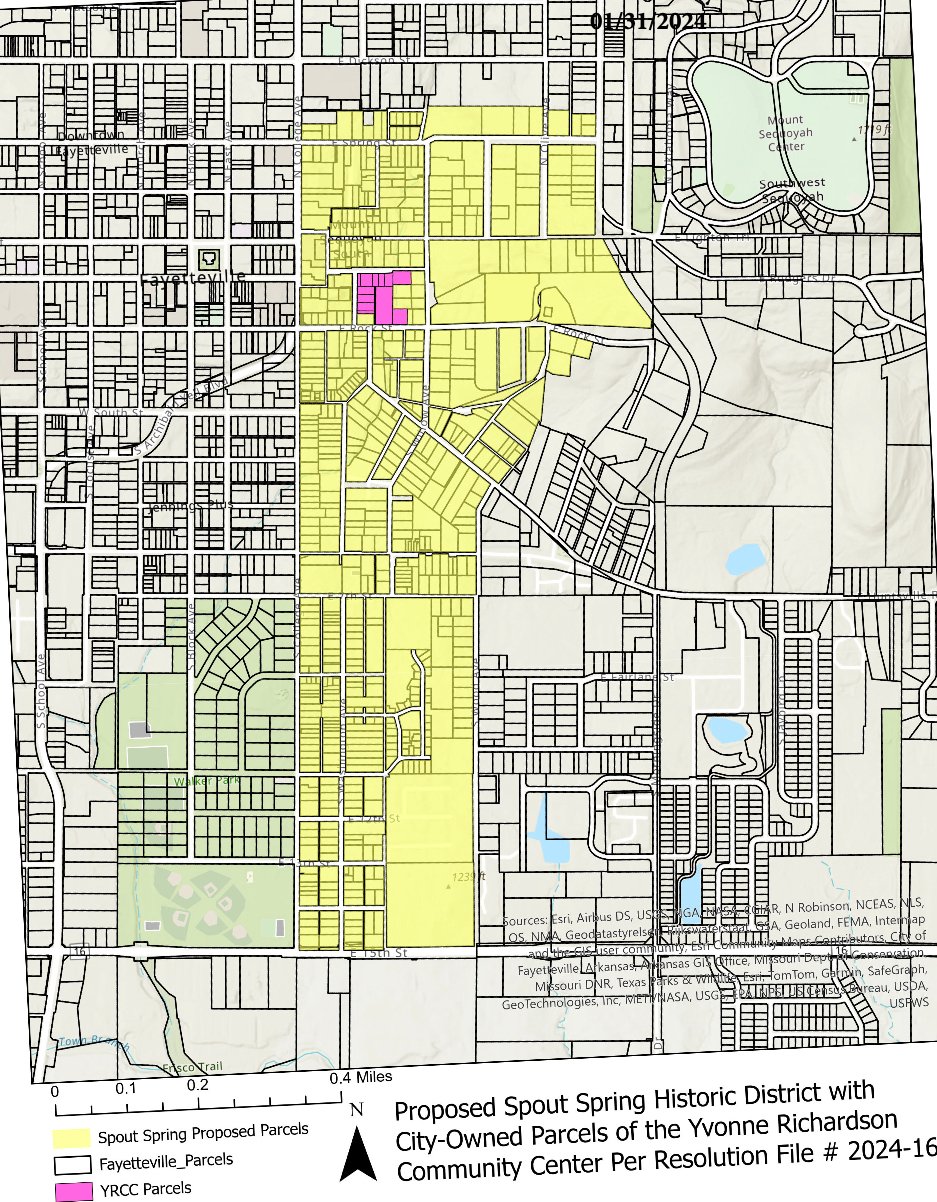 An initial concept drawing shows what an expanded Yvonne Richardson Community Center could look like. (Courtesy/Miller Boskus Lack Architects)
An initial concept drawing shows what an expanded Yvonne Richardson Community Center could look like. (Courtesy/Miller Boskus Lack Architects)FAYETTEVILLE — City property could become part of a new historic district in the south part of town.
City Council members on Tuesday voted 8-0 to authorize Mayor Lioneld Jordan to sign a petition to join the Spout Spring historic district, along with any other property owners who wish to become part of the proposed preservation area.
The nonprofit group NWA Black Heritage is working to create the district as part of a plan to preserve Black history in Fayetteville, specifically in the Spout Spring neighborhood where many Black families settled following the Civil War.
If created, the district would stretch from about Spring Street to the north, Olive and Wood avenues to the east, 15th Street to the south and College Avenue to the west.
The mayor’s signature is needed because the boundaries include the city-owned Yvonne Richardson Community Center and the Fayetteville Senior Activity & Wellness Center.
Sharon Killian, board president of the association, last year told the council of some of the historical examples of the remnants of Black history that have been erased around town, and spoke about a 1945 city plan that segregated Black residents and codified the removal of Fayetteville’s Black neighborhoods, allowing for the displacement of minority families.
Killian showed a map of over 270 Black-owned properties in the early 1900s, including several historic schools and other landmarks that no long exist. She said part of the plan called for a highway to run through the Spout Spring neighborhood, but residents fought the idea and it was never built.
“We want to stop the bleeding,” Killian said. “So there is land there and buildings there so that, when we do build a district, there’s something to build it with.”
Emma Willis, a consultant hired by the association, is leading the charge for the project which begins with getting signatures from property owners within the proposed boundaries.
Willis said if signatures from a majority of the property owners are collected, then the process of defining the regulations of the district can begin.
Britin Bostick, the city’s long-range planner, said the city’s Historic District Commission could work with both the city’s Black Heritage Preservation Commission and a hired consultant to complete that process.
Once drafted, the state’s Historic Preservation Program and the city’s Planning Commission would make a recommendation before the City Council votes on the creation of the district as a final step.
Councilmember Sarah Bunch said she supports joining the petition, but asked if the city would be limited in whether it can update or expand the Yvonne Richardson Community Center in the future if it’s part of a historic district.
The city is currently working on a $1 million expansion of the center at 240 E. Rock St. The facility was built in 1996 through funding by former University of Arkansas men’s basketball coach Nolan Richardson in honor of his daughter, Yvonne. The 10,000-square-foot center is operated by the city’s Parks & Recreation department, and provides programming for under-served families.
City Attorney Kit Williams said interior updates are not limited by historic districts, but the Historic District Commission would likely need to approve exterior changes to any buildings within the district once it’s officially created.
Other members discussed possible regulations that would be placed upon property owners, but Councilmember Scott Berna said as odd as it seems, the time to decide those things is for another day. Tuesday’s decision, he said, was simply whether the city should give its signature to help get the process started.
Councilmember D’Andre Jones, who first sponsored the proposal along with former member Sonia Harvey, said there has been overwhelming support for the proposal since it was first discussed last year, especially among Fayetteville’s Black residents. He said he knows there’s a lot of work left, but he was excited to get the first box checked.
“This is just a small part of a big puzzle,” said Jones.
 Proposed Spout Spring historic district boundary (Courtesy/City of Fayetteville)
Proposed Spout Spring historic district boundary (Courtesy/City of Fayetteville)
